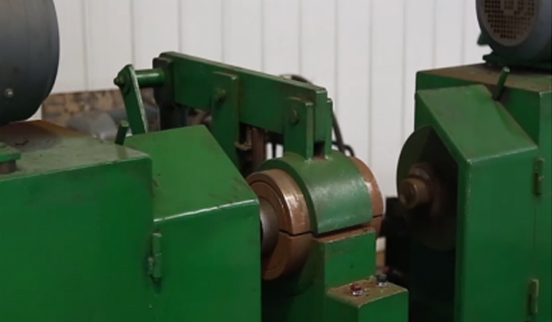 Afrikaans
Afrikaans  Albanian
Albanian  Amharic
Amharic  Arabic
Arabic  Armenian
Armenian  Azerbaijani
Azerbaijani  Basque
Basque  Belarusian
Belarusian  Bengali
Bengali  Bosnian
Bosnian  Bulgarian
Bulgarian  Catalan
Catalan  Cebuano
Cebuano  Corsican
Corsican  Croatian
Croatian  Czech
Czech  Danish
Danish  Dutch
Dutch  English
English  Esperanto
Esperanto  Estonian
Estonian  Finnish
Finnish  French
French  Frisian
Frisian  Galician
Galician  Georgian
Georgian  German
German  Greek
Greek  Gujarati
Gujarati  Haitian Creole
Haitian Creole  hausa
hausa  hawaiian
hawaiian  Hebrew
Hebrew  Hindi
Hindi  Miao
Miao  Hungarian
Hungarian  Icelandic
Icelandic  igbo
igbo  Indonesian
Indonesian  irish
irish  Italian
Italian  Japanese
Japanese  Javanese
Javanese  Kannada
Kannada  kazakh
kazakh  Khmer
Khmer  Rwandese
Rwandese  Korean
Korean  Kurdish
Kurdish  Kyrgyz
Kyrgyz  Lao
Lao  Latin
Latin  Latvian
Latvian  Lithuanian
Lithuanian  Luxembourgish
Luxembourgish  Macedonian
Macedonian  Malgashi
Malgashi  Malay
Malay  Malayalam
Malayalam  Maltese
Maltese  Maori
Maori  Marathi
Marathi  Mongolian
Mongolian  Myanmar
Myanmar  Nepali
Nepali  Norwegian
Norwegian  Norwegian
Norwegian  Occitan
Occitan  Pashto
Pashto  Persian
Persian  Polish
Polish  Portuguese
Portuguese  Punjabi
Punjabi  Romanian
Romanian  Russian
Russian  Samoan
Samoan  Scottish Gaelic
Scottish Gaelic  Serbian
Serbian  Sesotho
Sesotho  Shona
Shona  Sindhi
Sindhi  Sinhala
Sinhala  Slovak
Slovak  Slovenian
Slovenian  Somali
Somali  Spanish
Spanish  Sundanese
Sundanese  Swahili
Swahili  Swedish
Swedish  Tagalog
Tagalog  Tajik
Tajik  Tamil
Tamil  Tatar
Tatar  Telugu
Telugu  Thai
Thai  Turkish
Turkish  Turkmen
Turkmen  Ukrainian
Ukrainian  Urdu
Urdu  Uighur
Uighur  Uzbek
Uzbek  Vietnamese
Vietnamese  Welsh
Welsh  Bantu
Bantu  Yiddish
Yiddish  Yoruba
Yoruba  Zulu
Zulu conveyor components & parts
Understanding Conveyor Components and Parts
Conveyor systems are essential in various industries, serving as the backbone for material handling and transportation processes. By understanding the components and parts of these systems, businesses can enhance efficiency, reduce downtime, and optimize operations.
1. Basic Components of Conveyors
Conveyor systems consist of several key components that work together to facilitate the movement of goods. The most fundamental part is the conveyor belt, which is designed to transport materials from one location to another. Conveyor belts come in different materials, including rubber, plastic, and metal, catering to specific needs based on the weight, size, and type of materials being transported.
2. Drive System
The drive system is another critical component of a conveyor system. It typically includes a motor, gears, and a pulley system that turns the conveyor belt. The motor’s power determines the conveyor’s speed and load capacity. Different drive configurations, such as drum drives and gear motors, provide versatility to meet various operational demands.
Rollers and idlers are crucial for supporting and guiding the conveyor belt. They help reduce friction and wear on the belt, which enhances its lifespan. Rollers are placed at regular intervals to maintain the belt’s alignment and are pivotal in influencing the efficiency of material movement.
conveyor components & parts

4. Supports and Framework
The support structures of a conveyor system, including frames and brackets, are essential for stability and safety. These components must be robust enough to handle the load being transported and must be designed to prevent sagging or misalignment over time.
5. Sensors and Control Systems
Modern conveyor systems often integrate advanced sensors and control systems that improve operational performance. These technologies can monitor the conveyor’s functionality and detect issues such as jams or misalignments, allowing for timely interventions and reducing downtime.
6. Customization Options
Businesses can also customize their conveyor systems by incorporating various components, such as guards, hoppers, and magnetic separators. Customization enables industries to address unique challenges and facilitate specialized transportation needs.
Conclusion
Understanding the various components and parts of conveyor systems is vital for efficient material handling. By selecting the appropriate parts and fostering regular maintenance, businesses can significantly enhance productivity and ensure smooth operations. Whether it’s a simple belt conveyor or a complex automation system, the right components can make all the difference in achieving operational excellence.
-
Revolutionizing Conveyor Reliability with Advanced Rubber Lagging PulleysNewsJul.22,2025
-
Powering Precision and Durability with Expert Manufacturers of Conveyor ComponentsNewsJul.22,2025
-
Optimizing Conveyor Systems with Advanced Conveyor AccessoriesNewsJul.22,2025
-
Maximize Conveyor Efficiency with Quality Conveyor Idler PulleysNewsJul.22,2025
-
Future-Proof Your Conveyor System with High-Performance Polyurethane RollerNewsJul.22,2025
-
Driving Efficiency Forward with Quality Idlers and RollersNewsJul.22,2025





























